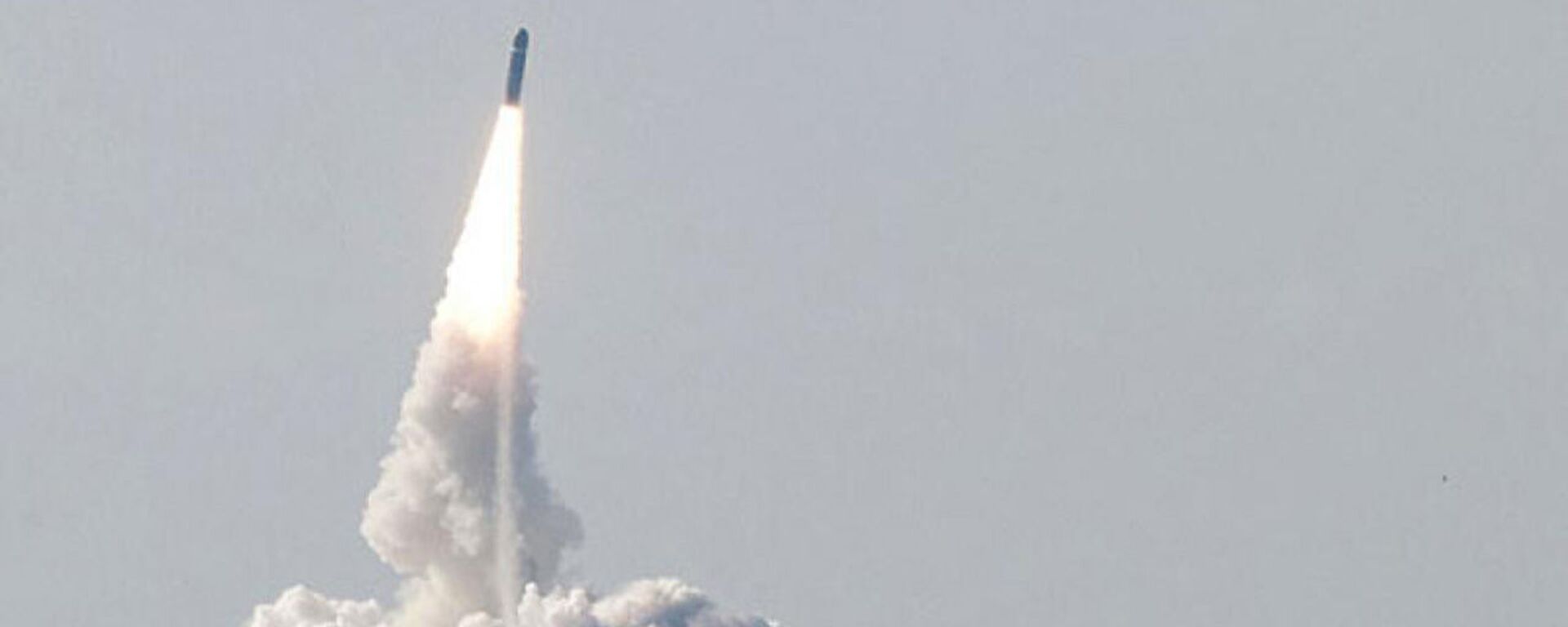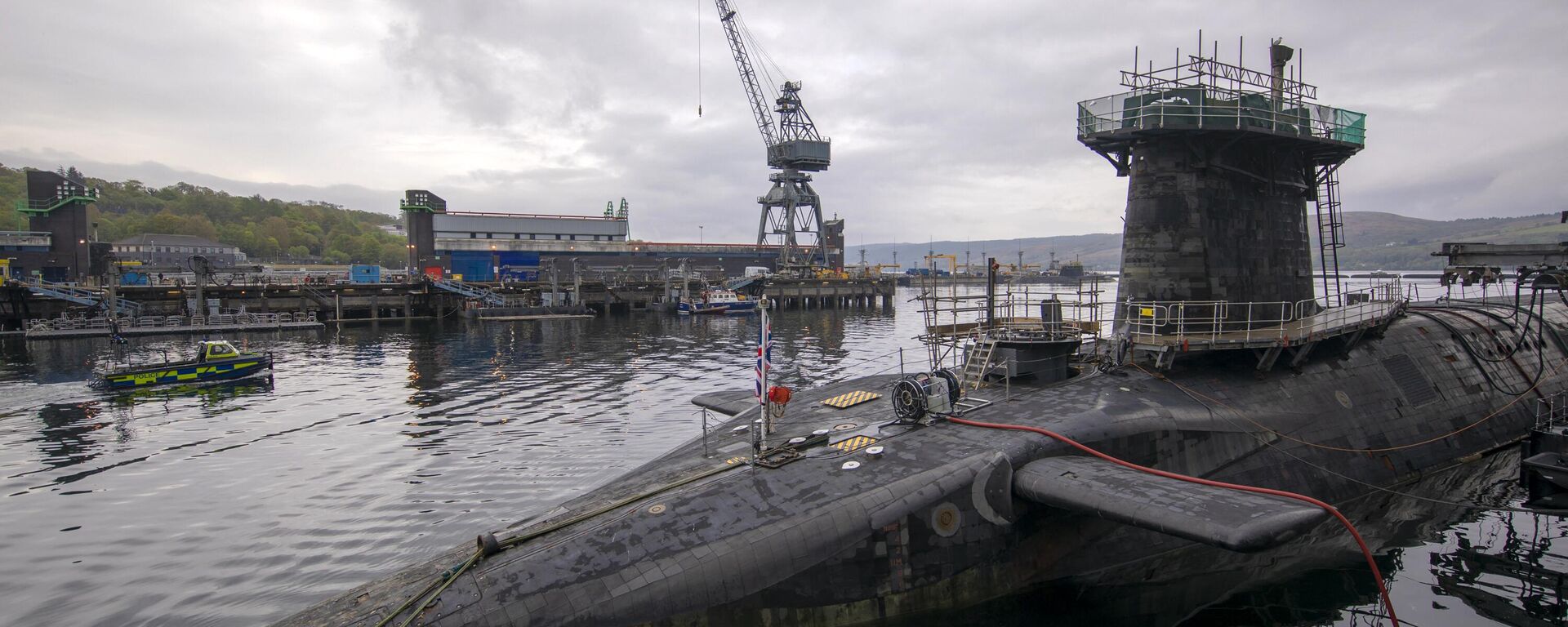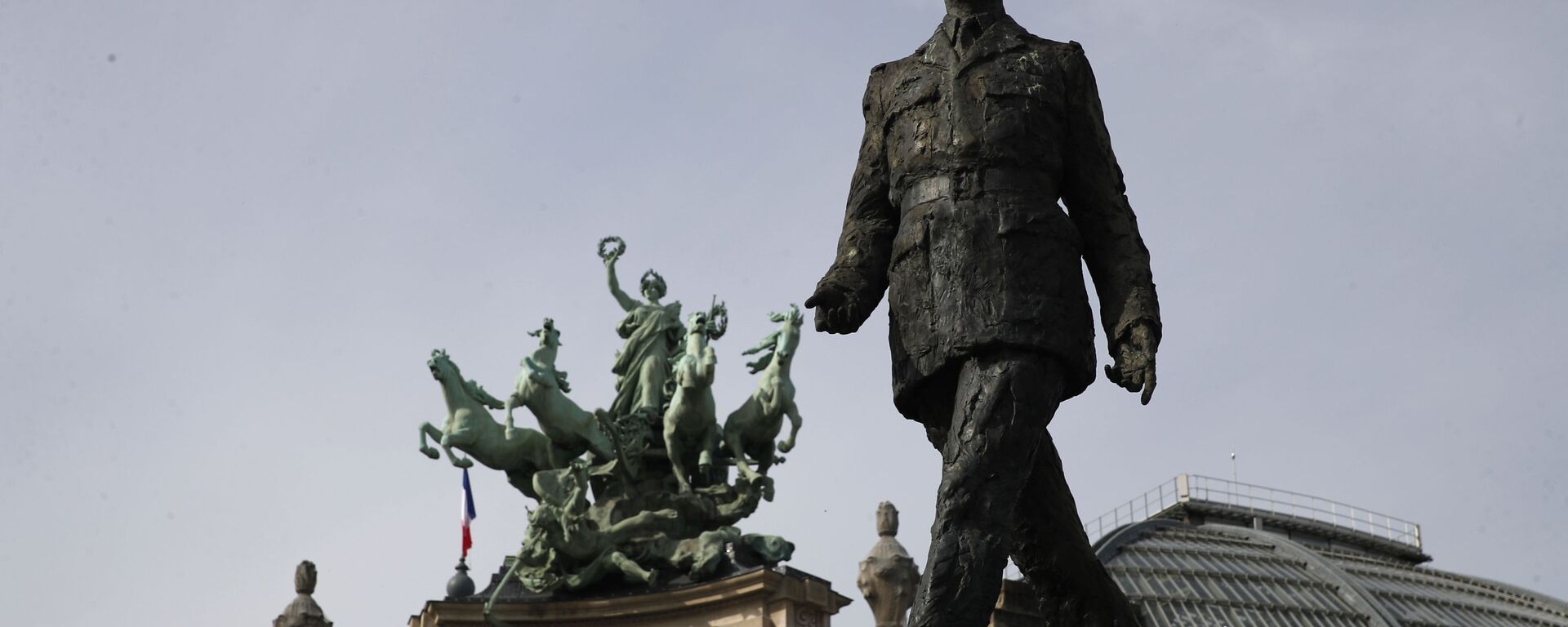No Trust in US' Nuclear Umbrella? Why France is Upgrading Its Strategic Missiles
17:51 GMT 20.11.2023 (Updated: 18:29 GMT 20.11.2023)

© AFP 2023 / JEAN-PAUL BARBIER
Subscribe
France conducted a test-launch of its new M51.3 sub-launched ballistic missile Saturday, demonstrating that Paris retains the ability to strike enemies using the deadliest weapon known to humanity. What are the origins of France’s nuclear deterrent, and why has the country held onto it over the decades? Sputnik reached out to experts for answers.
Saturday’s M51.3 launch was carried out from a land-based test facility in Biscarrosse, southwestern France, with the missile completing a successful flight before splashing down in an undisclosed location in the North Atlantic Ocean, “several hundred kilometers from any coast,” according to a statement by the French Ministry of Armed Forces.
“The test was carried out without a nuclear charge and in strict compliance with France’s international commitments,” the ministry assured, adding that the launch, conducted “as part of the M51 program, once again demonstrates the excellence of the high technology that French industries are implementing in this area.”
The M51 series of submarine-launched intercontinental ballistic missiles has its origins in the 1980s, and first introduced into service in late 2010, gradually replacing the M45 SLBM earlier used by the French Navy’s Triomphant-class ballistic missile submarines as the backbone of France’s nuclear deterrent.
The three-stage solid-fuel rockets are designed to carry up to 10 independently-targetable TN 75 thermonuclear warheads, which have a yield of up to 110 kilotons apiece (for reference, the American nuclear bomb which leveled much of the Japanese city of Hiroshima and killed up to 126,000 civilians had a yield of "just" 16 kilotons). Each of France’s four Triomphant-class subs can carry up to 16 vertically-launched ballistic missiles, giving the Fifth Republic enough nuclear firepower to destroy a major country in the event of war.
Eleven M51 test-launches were carried out from 2006 onward (10 of those successful), with Saturday’s launch becoming the twelfth. Work on the upgraded M51.3 variant of the missile began in 2014. The new model, which is expected to increase the missile’s range by several hundred kilometers from its current estimated range of 8,000-10,000 km, reportedly also features unspecified new characteristics designed to help warheads penetrate enemy missile defenses.
The M51.3 is expected to be fielded starting in 2025, and to be equipped aboard the Triomphant-class and its successor, known as the Sous-Marine Nucleaire Lanceur d’Engins de Troisieme Generation ("Third Generation Nuclear Ballistic Missile Submarine"), which is expected to start replacing the current subs around the year 2035. Saturday’s launch was the M51.3 variant’s first.
France’s Force de Frappe Nuclear Doctrine
When fielded, the M51.3 will complement France’s nuclear deterrent, known as the Force de Frappe (lit. "Strike Force") or Force de Dissuasion ("Deterrence Force").
France became the fourth country in the world to develop a nuclear deterrent, carrying out its first nuclear test on February 13, 1960 at the Reggane test site in Algeria, two years before the North African nation gained its freedom in the war of independence against Paris. The French government first signed off on the creation of a nuclear weapons program in the mid-1950s, with WWII-era Resistance general hero-turned politician Charles de Gaulle reinvigorating the push for an independent French nuclear force after becoming president in 1958.
From the outset, Paris sought to ensure an independent deterrent separate from that of the United States – and to develop sufficient nuclear firepower not to utterly destroy its presumed Soviet adversary in the event of war, but enough to dissuade an enemy from an attack on France. During the Cold War, France’s deterrent featured land, sea and air-based components, with the mission handed over entirely to the Navy in the 1990s.
“France is a member of NATO but thanks to General De Gaulle, we have kept a minimum of dependence toward NATO” as far as nuclear weapons are concerned, Colonel Jacques Hogard, a 26-year veteran of the French Army and Foreign Legion and Special Forces officer, told Sputnik, when asked about the origins of France’s independent deterrent.
France’s nuclear doctrine “guaranteed and still guarantees” the nation’s “independence as a nuclear power,” and was made possible “purely because of the will of General De Gaulle, who imposed it on the Americans,” Hogard explained.
The central point of the French nuclear deterrent is “precisely so as not to depend on the American umbrella,” with the matter constituting an “essential question” and key pillar of the France’s military doctrine, which concedes the possibility of alliances, but not at the expense of Paris’s strategic security, the expert said.
As far as the country’s modern nuclear developments are concerned, Washington likely to “view[s] this type of activity with a certain suspicion,” even if it is “well aware that [President Emmanuel] Macron is unfortunately not De Gaulle,” the officer believes.
Dr. Alessandro Politi, an Italy-based global political and geopolitics expert with over 30 years of experience under his belt, told Sputnik that France’s deterrent, which is similar in age to Britain’s, nevertheless is even more independent than London’s due to the latter’s dependence on the United States and its Trident-series missiles.
“Since the start, the French insisted that their deterrent was strictly for national deterrence, both on doctrine and in practice. On doctrine, because they didn’t believe to extend that deterrence” to other countries, Politi explained. Paris, he noted, “didn’t believe that someone would risk one’s own cities for somebody else’s city,” regardless of alliance commitments.
“That was their belief, and it is still their belief today. The national deterrent is credible because it is national,” the observer stressed.
President De Gaulle “didn’t believe” in reliance on the American nuclear deterrent, given that “once you take a decision in nuclear matters, they have long-reaching consequences,” Politi emphasized. “In the end, it’s a matter of faith, if you trust or you don’t trust. And in those matters they [the French, ed.] don’t trust. But it’s a very old position, decades old.”
That said, despite the absence of a common European Union Defense Policy, an informal debate has been taking place, so far limited to the academic sphere, about the possible extension of the French nuclear umbrella over Europe, or at least over Germany, Politi noted, emphasizing that very recently, such as a concept was deemed “absolutely inconceivable.”
“There is so much to do just in terms of conventional deterrence that, frankly, thinking about the nuclear deterrent [is] really a long way [away], just only for political reasons,” the observer said. “One of the byproducts of this idea, which I’m sure you know Paris has reflected upon, is if you extend your deterrence to Europe, why shouldn’t you make Europe your seat at the UN Security Council? If you have a common security and defense policy, why should France have a single seat instead of having a European seat? Of course, again, between academic and conceptual reflections and politics, there is always a wide gap. But conceptually it’s something that already Prime Minister Giulio Andreotti in Italy had put as an issue. If we are Europe, we should have a single seat in the UN Security Council. Of course, the French were not inclined to think that way.”
Is France’s Deterrent Credible?
“Submarines are, for the moment, the least-traceable” nuclear-capable weapons for ensuring a deterrent, with technologies yet to be created to precisely identify and neutralize nuclear subs lurking in the oceans, Politi stressed.
But “the problem,” he noted, is that over the long term, “submarines sooner or later could become much more visible than today,” and this would become “a very big issue” for countries with smaller nuclear arsenals, France included.
Taken in that light, France's missile testing, and the creation of a new generation of costly new strike platforms, is designed to keep the European nation's deterrent relevant in an increasingly complicated world.





